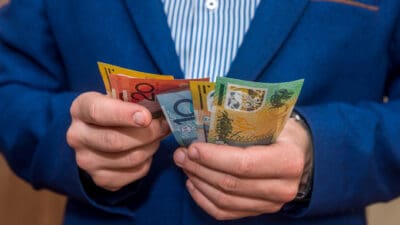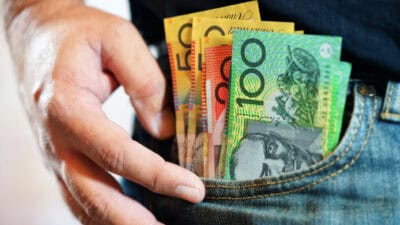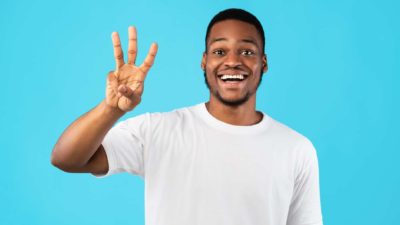Investors need to consider many elements when making the choice between shares vs. property.
One of them is yield.
In this article, we will compare the gross rental yields currently being achieved across Australia's metro and regional property markets vs. the typical dividend yield delivered by ASX shares.
Rental returns of houses
Here are the current gross rental yields of houses across the country.
| Market | Gross yield | Market | Gross yield |
| Sydney | 2.6% | Regional NSW | 4% |
| Melbourne | 3% | Regional VIC | 3.9% |
| Brisbane | 3.7% | Regional QLD | 4.6% |
| Adelaide | 3.7% | Regional SA | 4.9% |
| Perth | 4.5% | Regional WA | 6.3% |
| Hobart | 4% | Regional TAS | 4.3% |
| Darwin | 6% | Regional NT | 6.5% |
| Canberra | 3.6% |
Rental returns of apartments
Here are the current gross rental yields of apartments across Australia.
| Market | Gross yield | Market | Gross yield |
| Sydney | 3.9% | Regional NSW | 4.3% |
| Melbourne | 4.4% | Regional VIC | 4.5% |
| Brisbane | 5.2% | Regional QLD | 5% |
| Adelaide | 5.1% | Regional SA | 5.2% |
| Perth | 6.3% | Regional WA | 8.5% |
| Hobart | 4.6% | Regional TAS | 5% |
| Darwin | 7.4% | Regional NT | n/a |
| Canberra | 5% |
How do rental returns compare to dividends?
As you can see above, some of these rental yields are pretty impressive. But it's important to remember that these are gross yields. That means they do not incorporate the ongoing costs of holding property.
Holding costs can make a significant difference to your net rental return, and they only apply to property — not shares. Let me explain.
The holding costs of a typical investment property include council rates, water rates, insurance premiums, strata levies, repairs, and property management fees.
All of this amounts to several thousand dollars per year. As a general indication, investors should budget for between $5,000 to $10,000 in holding costs per annum, depending on the property type and location.
The impact of holding costs on rental returns
Let's look at some case studies to see how holding costs can impact rental returns.
Say you buy in the highest-yielding market available right now. That's an apartment in regional Western Australia, where the median price is currently $308,465. The gross rental yield of 8.5% will deliver $26,220 in rent per year or $504 per week. If we deduct, say, $5,000 in holding costs, the gross yield falls to 6.9%.
What about an apartment in Sydney? If you purchase at the median price of $828,919, the 3.9% yield will deliver $32,328 per year in rent, or about $620 a week. If we deduct, say, $8,000 in holding costs, the gross yield falls to 2.95%.
Now, these examples do not take into account the tax deductibility of these holding costs. Nor do they take into account one of the biggest tax advantages of holding real property investments: depreciation.
These tax elements can make a real difference to your annual return on investment (ROI), but as you won't see them til tax time, you need to have the cash flow to cover the holding costs as they arise.
Historical Australian Tax Office data shows most property investors end up negatively geared on an annual basis. That means their rental returns do not cover their costs, which comprise both the holding costs and the repayments on their investment loans.
The lesson in this data is that most property investors are not in it for the yield. Many see rental returns as simply the means by which they cover their costs, in order to achieve big capital growth down the track.
Shares are different. There are no holding costs eating into annual dividend payments, and this is one of the reasons why ASX shares tend to attract more income investors vs. property.
What type of yield do ASX shares deliver?
A typical yield for ASX shares investments is 4% per annum.
But on top of that is the impact of one of the biggest tax advantages of holding stocks: franking credits.
If your portfolio is fully franked, your 4% dividend yield effectively goes up to 5.7% when franking is factored in.
And while 4% is a typical dividend yield, they vary widely across the 11 market sectors and across individual ASX stocks, too.
In an article comparing the FY24 dividend forecasts for ASX bank shares vs. ASX mining shares, we revealed a broad range of anticipated yields from 1.5% up to 7.2% — and most have franking on top.
For example, brokers forecast a 6.6% dividend yield for Fortescue Metals Group Ltd (ASX: FMG) shares in FY24 and a 6.4% yield for ANZ Group Holdings Ltd (ASX: ANZ) shares, according to CommSec data.
And both stocks pay dividends with 100% franking on top.
Does property deliver better capital growth?
Of course, yield is only one side of the investment equation. Capital growth is the other, and many property investors would argue that real estate delivers superior long-term capital growth.
Indeed, CoreLogic data shows the median house price across the combined capital cities has risen about 70% over the past 10 years. Over the same period, the S&P/ASX 200 Index (ASX: XJO) has risen by almost 50%.
But you could run the numbers on shares vs. property a million ways and get a different outcome each time.
In terms of which investment avenue is best for you, a lot depends on the type of property or shares you buy and the price you pay.
If you start investing early enough in life, you'll likely never have to decide between shares vs. property.
You'll just do both.
And if you're really clever, you'll diversify even further by purchasing non-residential real estate through ASX property stocks, as we discussed in a recent article.









